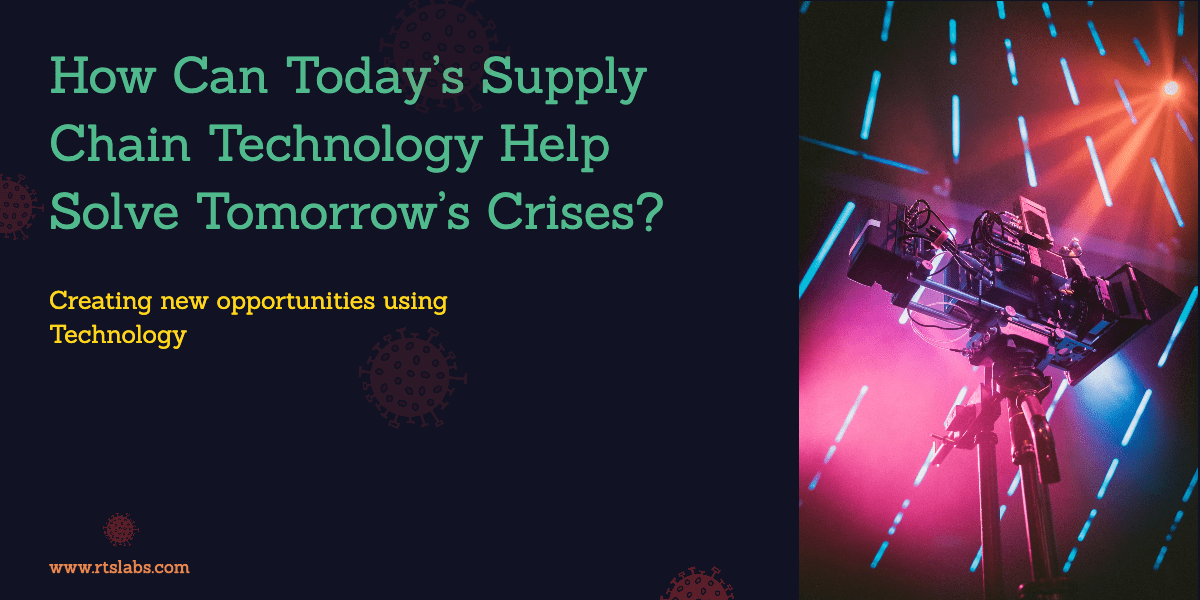Picture this: a novel disease sweeps the world, forcing billions into punishing lockdowns. Critical products vanish from store shelves — no more toilet paper, no more red meat, no more Lysol. People can’t find masks to protect themselves on emergency shopping trips.
The supply chain, in short, is broken.
It’s not hard to picture, because it’s already happened.
We can order toilet paper and N95 masks now, but they were treated like gold in the spring, during the early wave of COVID-19 shutdowns and travel restrictions. Months into the COVID crisis, some products remain in short supply. Others were offered at extortionate prices. Want to get fit from home? Good luck finding a half-decent home weight set for less than $250. That cute top for your Zoom meetings is probably sold out in the size you want, too. You can still get jeans, but who really cares? On Zoom, no one can see your pants.
We know the supply chain is susceptible to crises because we’ve all seen it break down in real-time this year. What matters now isn’t just knowing what’s wrong — it’s also important to understand how we can make it right. Today’s supply chain can become stronger with the help of tomorrow’s technology. Here’s how…
Start mapping everything in your supply chain
The more you know about everything in your supply chain, the better you’ll be able to maintain its operation in crises. In many cases, a lack of toilet paper or ideally-sized pants was an issue of visibility, rather than an issue of volume. This can be addressed via supply chain mapping.
The technologies already exist to comprehensively map supply chains, and in many of these chains, they can be bolted onto existing operations. Many businesses and logistics companies update their supply chain maps when people check-in by hand. All the technology in the world won’t be of much use when humans function as the critical point of failure in a supply chain.
Automating supply chain mapping processes would represent a massive step up for many chains today. A recent Visual Capitalist report showed that only 23% of warehouse managers believe they’ve already implemented good automation technologies. Half of the companies surveyed are still handling order fulfillment mainly or entirely by hand, and only 4% reported being “highly automated.” Should we be surprised that it was so hard to find toilet paper in April when most suppliers probably didn’t even know how much they had?
If you’re looking to start automating your supply chain mapping processes, radio frequency identification (RFID) and enterprise resource planning (ERP) software might be two good places to start.
Now, while it’s generally inexpensive to track goods through the supply chain with lots of RFID tags, you need to integrate these tags with software to make tracking truly effective and automated.
Walmart is a cautionary tale about the downside of RFID tracking without proper software integration. In 2003, it piloted an RFID tagging program with 100 top suppliers but didn’t give them software support.
Most vendors wound up putting RFID tags on everything and producing little useful intelligence. 2003’s ERP software wasn’t ready to integrate with RFID tech out of the box. By 2006, the pilot program was wound down with little to show for it beyond a lot of new RFID tags in 100 companies’ warehouses.
Walmart’s failure helped ERP developers learn, leading to modern ERP system designs that are often built to work with data recorded from RFID tags in real-time. The combination of RFID and ERP is far more potent and effective for supply chain mapping in 2020 than it was in 2003.
Analyze everything for hidden risks and vulnerabilities
It would’ve been unimaginable to expect a pandemic to sweep the world this year, but that doesn’t mean your supply chain needs to break under strain. If you’ve implemented effective tagging, tracking, and software systems throughout your supply chain, you’ll be ahead of most companies. But to stay ahead, you’ll need to put your data to work.
Dig deep into your extended supply network
COVID-19 hit manufacturing and retail in developed countries earlier than most. The initial lockdowns in China had ripple effects throughout the global supply chain.
You might not have any Tier 1 suppliers in China — rare enough when China is the world’s de facto manufacturer — but once you dig into your Tier 2 and Tier 3 supplier rosters, you’ll probably find quite a few. It’s not feasible to replace Chinese suppliers with domestic ones wholesale, but you should be able to spread out the risk by identifying alternative suppliers elsewhere. The deeper and more diverse your supplier network, the easier it’ll be to bring backup suppliers online in times of crisis.
It may not be possible to automate the expansion of your supplier network, but it’s certainly possible to automate its management. ERP systems often include supplier management modules, which allow you to interact with suppliers, and assess their capabilities, in real-time. Unfortunately, you may wind up at the mercy of suppliers with outdated tech. If you have the resources, learn from Walmart’s failure and make sure your supply network has the right software for real-time visibility.
Identify key points of failure and add redundancies
Warren Buffett once said that his favorite kind of company is one so well-built it could be run by a ham sandwich. It’s a nice ideal, but one that proves very hard to find in the real world. This challenge isn’t often because such businesses can’t be built, but because most businesses are built in practice with too much reliance on too few critical points of failure.
Inside your company, these points of failure might be machinery or other technological equipment. You can deal with mechanical failures by having a few backup units on hand at all times. But more often, points of failure are human beings, who can get sick or hurt, or be impacted by government action — such as mandatory lockdowns and social-distancing mandates.
Supply chain companies with multiple points of failure in key parts of their org charts often struggled this year, especially if those key personnel weren’t equipped to perform critical functions remotely. You can’t remotely manage every aspect of a supply chain, but most chains can be managed far more remotely than they were at the start of 2020. Multiple people should be able to perform mission-critical functions as well.
Cloud-based software addresses both issues.
Most modern ERP systems are cloud-based, multiplatform, and can be accessed anywhere as long as you’ve got valid login credentials. If one person controls key parts of your supply chain, cloud-based onboarding and training software can be used to bring other employees up to speed on those functions, so they can step in when needed with minimal disruption. Empowering multiple skilled personnel to tackle key tasks is a good way to add redundancy to your operations. It’ll get your company closer to that ideal ham-sandwich level of auto-piloted management.
These tips cover some of the basic ways supply chain technology can help your business overcome crises. However, this blog is far from a comprehensive overview of effective supply chain technology implementation. To get the most out of your supply chain technology, it’s best to work with the experts, like all of us here at RTS Labs.
We’ve got decades of collective experience in implementing and optimizing supply chain technology for some of the world’s largest companies, and we’d love to help you, too. Want to learn more? Get in touch with us today.






